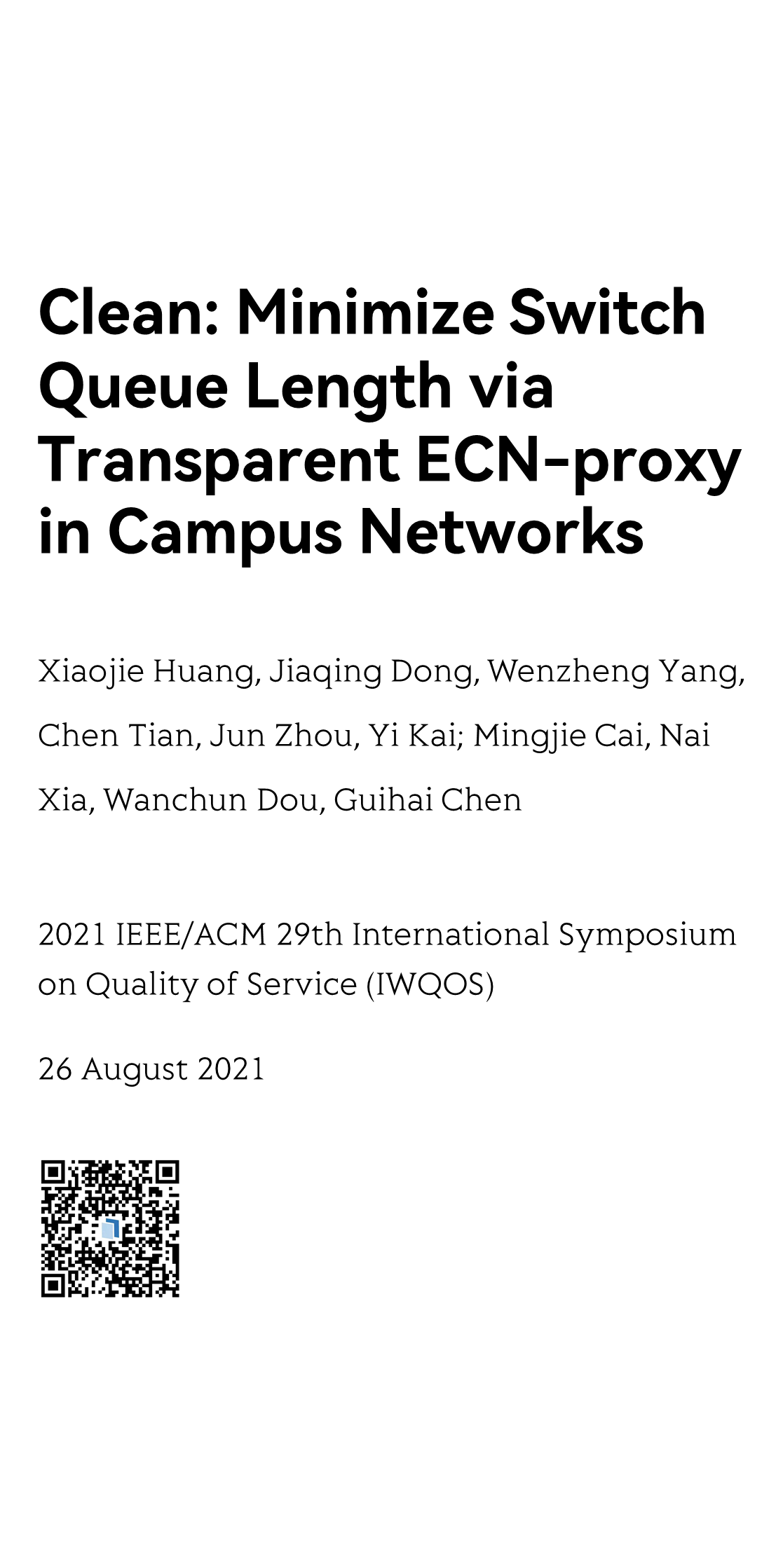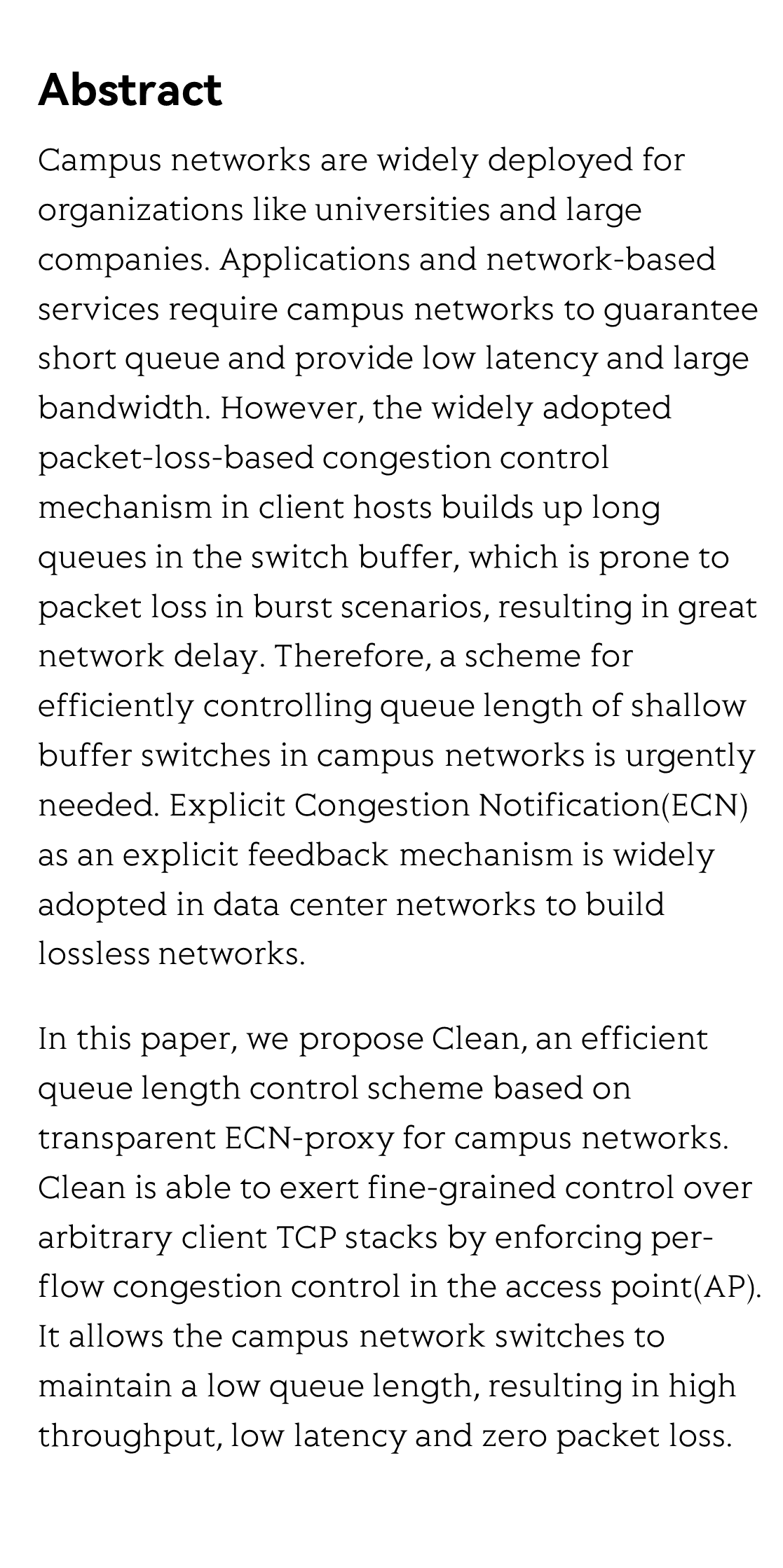(Conference Paper) Clean: Minimize Switch Queue Length via Transparent ECN-proxy in Campus Networks
Xiaojie Huang 黄晓洁 ¹, Jiaqing Dong ¹, Wenzheng Yang 杨文正 ¹, Chen Tian 田臣 ¹, Jun Zhou ², Yi Kai ², Mingjie Cai ², Nai Xia 夏耐 ¹, Wanchun Dou 窦万春 ¹, Guihai Chen 陈贵海 ¹
¹ State Key Laboratory for Novel Software Technology, Nanjing University, China
中国 南京大学 计算机软件新技术国家重点实验室
² Huawei, China
中国 华为
2021 IEEE/ACM 29th International Symposium on Quality of Service (IWQOS)
, 2021-08-26
Abstract
Campus networks are widely deployed for organizations like universities and large companies. Applications and network-based services require campus networks to guarantee short queue and provide low latency and large bandwidth. However, the widely adopted packet-loss-based congestion control mechanism in client hosts builds up long queues in the switch buffer, which is prone to packet loss in burst scenarios, resulting in great network delay. Therefore, a scheme for efficiently controlling queue length of shallow buffer switches in campus networks is urgently needed. Explicit Congestion Notification(ECN) as an explicit feedback mechanism is widely adopted in data center networks to build lossless networks.
In this paper, we propose Clean, an efficient queue length control scheme based on transparent ECN-proxy for campus networks. Clean is able to exert fine-grained control over arbitrary client TCP stacks by enforcing per-flow congestion control in the access point(AP). It allows the campus network switches to maintain a low queue length, resulting in high throughput, low latency and zero packet loss. Evaluation results demonstrate that Clean reduces the maximum queue length of the switch by 86% and reduces the 99th percentile latency by 85%. Clean also achieves zero packet loss in burst scenarios.
Flicker minimization in power-saving displays enabled by measurement of difference in flexoelectric coefficients and displacement-current in positive dielectric anisotropy liquid crystals
Junho Jung, HaYoung Jung, GyuRi Choi, HanByeol Park, Sun-Mi Park, Ki-Sun Kwon, Heui-Seok Jin, Dong-Jin Lee, Hoon Jeong, JeongKi Park, Byeong Koo Kim, Seung Hee Lee, MinSu Kim
Opto-Electronic Advances
2025-09-25
Dual-frequency angular-multiplexed fringe projection profilometry with deep learning: breaking hardware limits for ultra-high-speed 3D imaging
Wenwu Chen, Yifan Liu, Shijie Feng, Wei Yin, Jiaming Qian, Yixuan Li, Hang Zhang, Maciej Trusiak, Malgorzata Kujawinska, Qian Chen, Chao Zuo
Opto-Electronic Advances
2025-09-25





